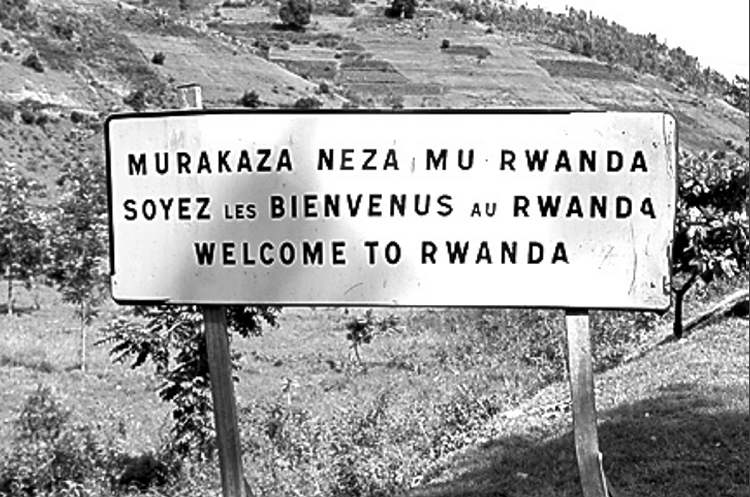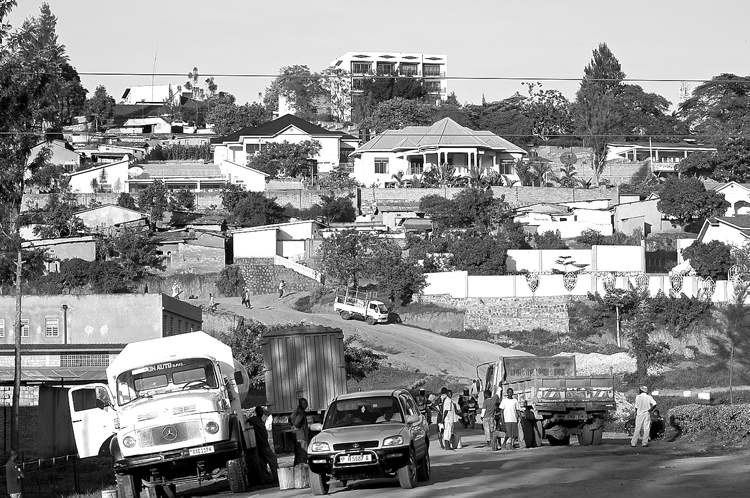Rwanda reborn
Kigali perfect place to start for first-time visitors to Africa
Advertisement
Read this article for free:
or
Already have an account? Log in here »
To continue reading, please subscribe:
Monthly Digital Subscription
$1 per week for 24 weeks*
- Enjoy unlimited reading on winnipegfreepress.com
- Read the E-Edition, our digital replica newspaper
- Access News Break, our award-winning app
- Play interactive puzzles
*Billed as $4.00 plus GST every four weeks. After 24 weeks, price increases to the regular rate of $19.00 plus GST every four weeks. Offer available to new and qualified returning subscribers only. Cancel any time.
Monthly Digital Subscription
$4.75/week*
- Enjoy unlimited reading on winnipegfreepress.com
- Read the E-Edition, our digital replica newspaper
- Access News Break, our award-winning app
- Play interactive puzzles
*Billed as $19 plus GST every four weeks. Cancel any time.
To continue reading, please subscribe:
Add Free Press access to your Brandon Sun subscription for only an additional
$1 for the first 4 weeks*
*Your next subscription payment will increase by $1.00 and you will be charged $16.99 plus GST for four weeks. After four weeks, your payment will increase to $23.99 plus GST every four weeks.
Read unlimited articles for free today:
or
Already have an account? Log in here »
Hey there, time traveller!
This article was published 14/04/2012 (4931 days ago), so information in it may no longer be current.
Walking along the bustling, asphalt streets of Kigali, among the crowds of tourists and schoolchildren, packed buses and noisy motorcycles, it’s hard to imagine that not so long ago these streets were dirt tracks. Harder still to imagine they once ran red with blood.
In 1994, Rwanda endured one of the most devastating events of the 20th century. More than a half-million members of the minority Tutsi ethnic group were slaughtered, along with tens of thousands of Hutus opposed to the regime in power. Nearly half the population was killed or fled. Schools and factories were shut. The only foreigners were UN and Red Cross staff and journalists, many of whom returned home with lifelong scars. In the blunt words of a Kigali Genocide Memorial Centre caption, “The genocide had accomplished its goal. Rwanda was dead.”
The country has risen again, and with a vengeance. President Paul Kagame, a former rebel leader, runs an extremely tight ship and has his share of detractors. However, under his leadership, Rwandans’ per capita income has risen to the highest in the region, cities have been cleaned up, English has been added as an official language and renewed emphasis has been placed on technology, tourism and wildlife conservation. In 2010, Rwanda welcomed more than 600,000 foreign tourists, 120,000 from outside Africa. A three-storey shopping mall in the town centre, Union Trade Centre, is packed with Rwandans and tourists taking advantage of its department stores, bakeries and Second Cup-like coffee shop. Two youth hostels have sprung up to accommodate the growing number of backpackers.

For those visiting Africa for the first time, Kigali would be the place to start, with hot showers, reasonably fast Internet, reliable electricity and a level of predictability that can be hard to find elsewhere. The capital of The Land of a Thousand Hills is also 1,550 metres above sea level, blessing the region with a relatively cool and damp climate (about 20 degrees year-round).
The Hotel des Mille Collines, in the heart of downtown, is a great place to contemplate the post-genocide transformation up close. The Mille Collines is the subject of the 2004 movie Hotel Rwanda, based on actual events. Protected by the hotel’s Hutu manager, 1,000 Tutsis waited out the genocide, drinking the pool water. There are still bullet holes in the walls from warning shots fired by Hutu militia members. But the white-marbled lobby could be any four-star hotel lobby in the Western world. The hotel staff switch easily between French and English as dozens of tourists and business people work at their laptops. The hotel offers its guests a “business lunch” and a modern fitness centre. The only reference to the genocide is an oblique one on the hotel’s website: “Swim in the world-famous swimming pool.”
Kigali is a huge city in a geographical sense, spread out over 730 square kilometres of hills and valleys. Walking from place to place can be time-consuming, and it is easy to get lost on the buses, which have no set routes. The most efficient way to get around, then, is by moto-taxi. Stand at any intersection with an arm outstretched, and a motorcyclist will soon appear. For a negotiable fare of between 500 and 2,000 Rwandan francs (90 cents to $3.50 Cdn) he will go anywhere in the city.
The Kigali Genocide Memorial Centre is worth a motorcycle ride. It’s located in the suburb of Gisozi, hence its other name, the Gisozi Memorial Centre.
It is a big, clean, modern museum with informative French and English captions and a multilingual audioguide. Admission is by donation; the audioguide costs 10,000 Rwandan francs ($17.60 Cdn).
At the beginning of the visit, there is a thorough summary of events before and during the genocide, including the desperate peacekeeping efforts of Canadian Gen. Romeo Dallaire and his small UN contingent.
One room holds dozens of bones and skulls — skulls with gaping holes caused by machete blows — and it is impossible not to wonder how it felt to die that kind of death. Another holds victims’ bloodstained clothes. In another room, survivors give video testimony, recalling terrifying weeks spent in neighbours’ basements or hiding under garbage piles.
The last room is dedicated to the child victims. For a moment, the viewer stops thinking of “800,000 dead” and starts thinking of David and Ariane, Patrick and Fabrice. Hundreds of photos hang on the walls, donated by victims’ parents.
The museum is surrounded by a series of memory gardens, including a not-nearly-complete wall of names — new mass graves are still being discovered all over the region. More than 200,000 victims have been reburied in the concrete tombs of the memory gardens of Gisozi.
Officially, there are seven genocide memorials, distributed all over Rwanda. At Ntarama, an hour outside of Kigali, the bones of 5,000 victims remain where they fell, in a church.
Everywhere in Rwanda there are reminders of terror and death. But the country also pulsates with life. Nearly half the population is under 20, too young to have lived through the genocide.
Amahoro Stadium, where Dallaire and his peacekeeping force sheltered thousands of refugees, has been repainted in the bright blues, greens and yellows of the new Rwandan flag. Where there once was panic, there are now the shouts of spectators at soccer matches and music festivals.
The city’s chaotic, buzzing markets are a great place to absorb street life and pick up ripe, seasonal fruit and just about anything else.
The nightlife is a highlight of any visit to Kigali. Planete Club, in the Kigali Business Centre complex, and the Cadillac, in the southern part of the city, come highly recommended. Arrive after midnight.
Outside of Kigali, you can appreciate the green and tranquil beauty of rural Rwanda.
In Volcanoes National Park, near the town of Musanze in the northwest, tourists who are willing to pay US$500 have the chance to track mountain gorillas.
Staying in “the interior” (outside the major cities) is a challenge because English and French are not widely spoken in rural areas, but smaller towns can provide an energizing respite from the buzz of the capital.
Huye, formerly known as Butare, is a quiet university town that is home to the national museum and lots of shady, pleasant walking paths.

A tourist who is spending more time in the region should visit Kigali’s chaotic but lovable sister city, Bujumbura, the capital of Burundi. “Buja” as locals call it, a six-hour bus ride from Kigali via Huye, is much closer to a Westerner’s idea of Africa. Tin roofs glint in the baking sun; pedestrians sprint out of the way of oncoming cars, motos and goats. A visit to the Living Museum (a combination zoo and ethnographic complex), shopping at the enormous Central Market and a swim in the bathwater-warm waters of Lake Tanganyika will make the visit worth your while. So will a nighttime visit to Coeur d’Afrique, an outdoor cabaret in the heart of downtown, where singers and acrobats perform until the wee hours of the morning. There is also no shortage of clubs here, often less expensive than their Rwandan equivalents.
For animal lovers, it is a short bus or taxi ride from the city to Rusizi National Park where, for around $15, visitors accompanied by a local guide have the chance to see hippos, crocodiles and antelopes in the wild along with dozens of migratory bird species. For a bit less than $100, it is possible to get up close and personal with the hippos in a boat.
Before going back to the city, stop at any one of several beachside restaurants. You may catch a concert by Burundi’s acrobatic traditional drummers, the intore. The evening offers an entirely different kind of concert — the bass of the hippos, the tenor of several different types of toad and the chirping of the crickets.
Hiking in the green, misty hills of Kigali or sipping a cold drink on a lakeside terrace in Bujumbura, you will certainly have a chance to appreciate the words of Burundian singer-songwriter Steven Sogo. “Qu’il est beau mon pays, qu’il est beau…”
— Postmedia News
IF YOU GO
WHEN TO GO
While there is no bad time to go to Africa’s Great Lakes region, it is perhaps most pleasant during the dry season (June-August).
WHERE TO STAY
Throughout Rwanda and Burundi, bed-and-breakfasts –known as “guest houses” — provide affordable, hospitable accommodation. There are two youth hostels in Kigali as well as four, four-star hotels. As Internet connections improve, CouchSurfing.org (a website that arranges free stays with locals in cities around the world) is becoming widely available in Kigali, although not in Bujumbura.

